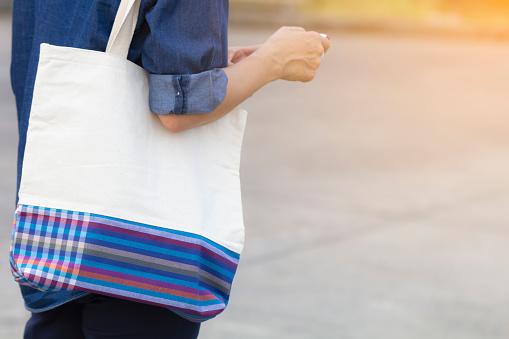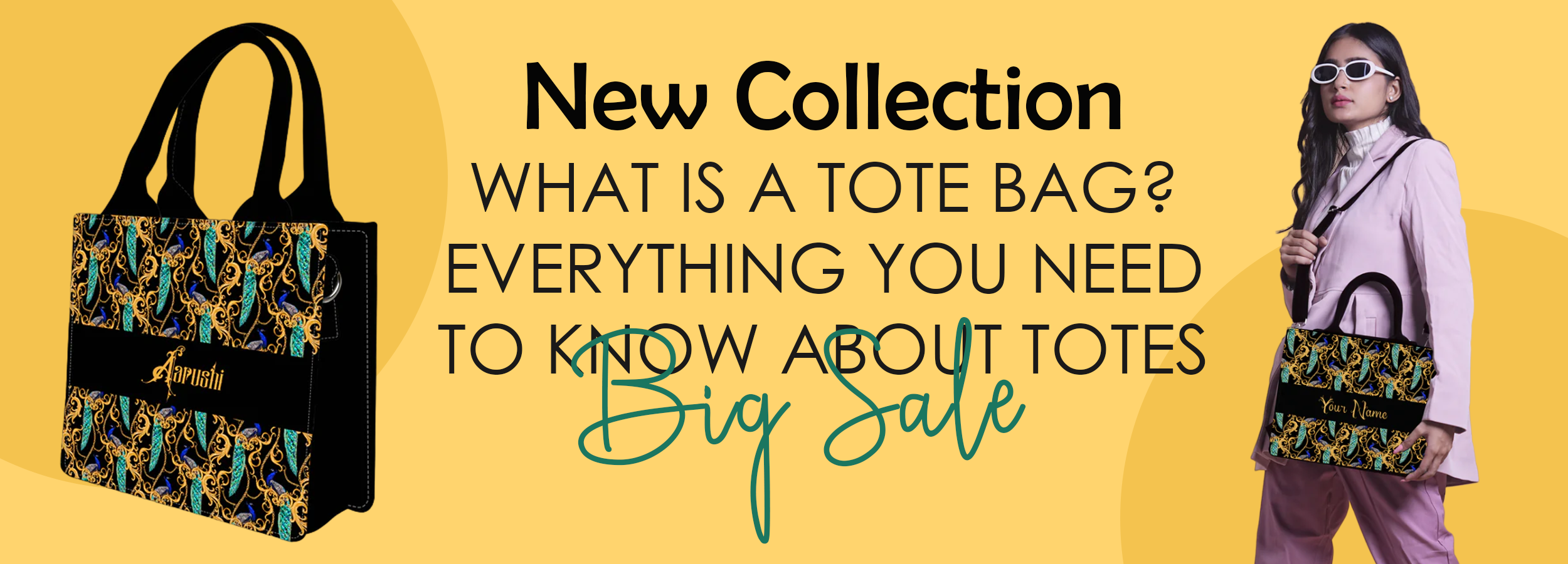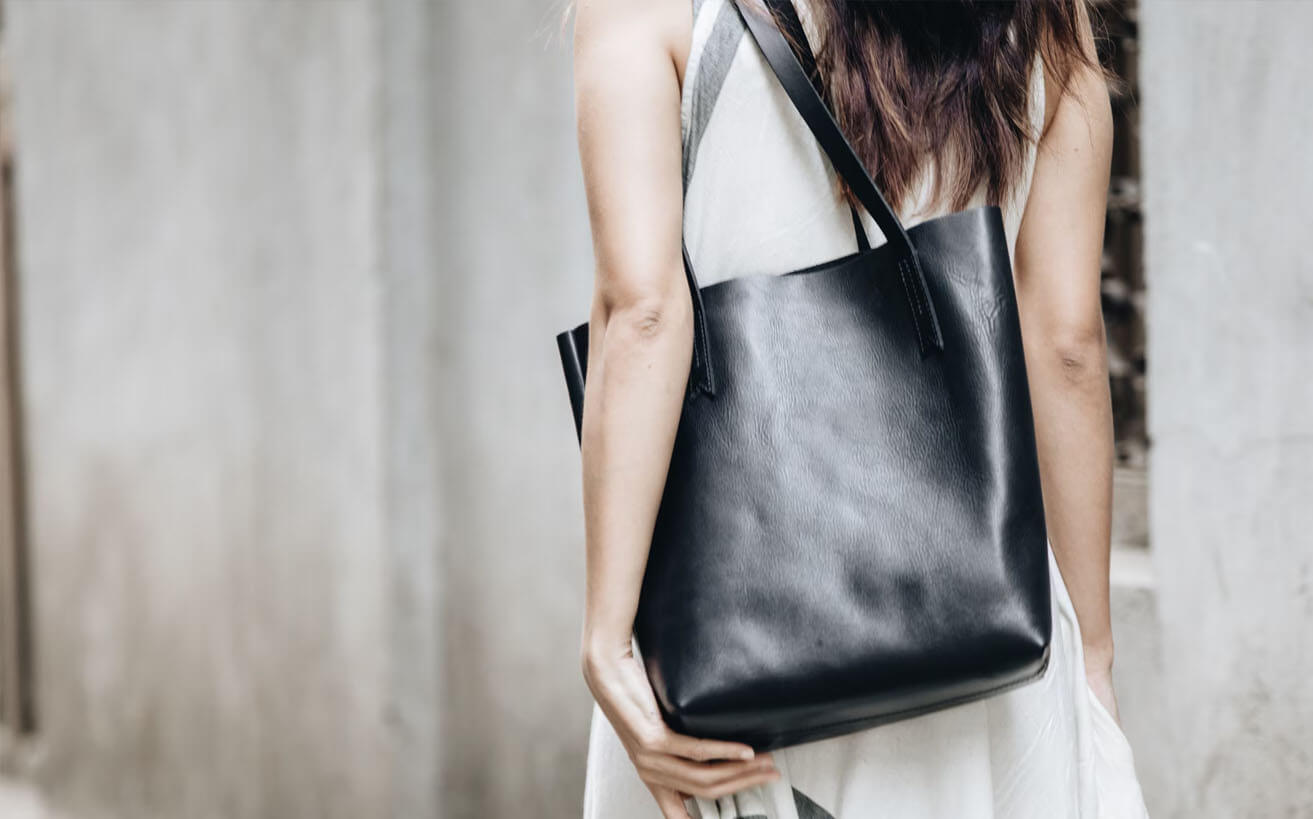A tote bag is a large, often unfastened bag with parallel handles. Valued for its simple design and vast capacity, it serves as a versatile carryall.

Table of Contents
- The Defining Characteristics of a Tote Bag
- A Brief History of the Versatile Carryall
- What Are the Different Types of Tote Bags?
- Why Choose a Tote Bag? Unpacking Its Main Uses
- How to Select the Perfect Tote Bag for Your Needs
- Caring for Your Tote Bag to Ensure Longevity

The Defining Characteristics of a Tote Bag
At its core, a tote bag is defined by a few key features that distinguish it from other bags like satchels, backpacks, or handbags. The primary characteristic is its spacious, single-compartment design. Unlike bags with intricate pockets and dividers, the classic tote offers one large, open space, making it incredibly easy to load and unload items. The name itself, “tote,” means “to carry,” which perfectly encapsulates its purpose.

Another defining feature is its pair of strong, parallel handles. These are designed to be long enough to comfortably wear over the shoulder but short enough to carry by hand without dragging on the ground. Traditionally, tote bags have an open top with no zipper or clasp, allowing for quick access. While many modern designs now include zipper or magnetic snap closures for added security, the open-top structure remains a hallmark of the classic style.
The distinction between a tote and a large handbag often comes down to structure and function. Handbags are typically more structured and fashion-focused, with more complex hardware and interior organization. A tote, by contrast, prioritizes utility and capacity, often featuring a simpler, more utilitarian construction that allows it to be folded or stored easily.
A Brief History of the Versatile Carryall
The term “tote” has been used to mean “to carry” since the 17th century, but the bag we recognize today didn’t gain widespread popularity until the 1940s. The American outdoor brand L.L. Bean introduced its “Boat Bag” in 1944. Made from durable canvas, it was designed to carry ice from the car to the freezer, showcasing its strength and practicality from the very beginning. This rugged, functional bag laid the groundwork for the modern tote.
It wasn’t until the 1960s that the tote bag transitioned from a purely utilitarian object into a fashion accessory. American designer Bonnie Cashin released her own line of stylish yet functional “Cashin-Carry” tote bags, which featured bold colors and elegant hardware. This pivotal moment elevated the tote, proving it could be both practical and chic. By the 1980s and 90s, it became a staple, with bookstores and publications offering branded canvas totes that served as both a useful bag and a cultural signifier.
Today, the tote bag occupies a unique space in the world of accessories. It is a canvas for self-expression, a workhorse for daily errands, and a symbol of sophisticated style, all at once. From simple cotton shoppers to luxurious, handcrafted leather pieces, its evolution reflects our changing needs for a bag that can truly do it all.
What Are the Different Types of Tote Bags?
The modern tote bag has evolved into numerous variations, primarily categorized by material and intended function. Understanding these differences helps in choosing a bag that aligns perfectly with your lifestyle and aesthetic preferences.
Classification by Material
The material is the soul of a tote bag, defining its look, feel, durability, and ideal use case. Each material offers a unique set of benefits.
Leather: For those seeking sophistication, durability, and a timeless appeal, a leather tote is the ultimate choice. Full-grain leather, in particular, is celebrated for its strength and ability to develop a beautiful, rich patina over time. A well-crafted leather tote, such as those from Beldtura Leather, transitions seamlessly from a professional office setting to an elegant evening out. It is an investment in style and longevity that speaks to a commitment to quality craftsmanship.
Canvas: The quintessential classic. Canvas totes are lightweight, durable, and often washable. They are perfect for casual outings, grocery shopping, or as a reusable shopper. Their simple nature makes them a popular choice for custom prints and logos.
Nylon: Known for being lightweight, water-resistant, and easy to clean, nylon totes are ideal for travel, gym sessions, or as a dependable bag for rainy days. They can often be folded down compactly, making them an excellent “just-in-case” bag to keep in your car or luggage.
Jute or Straw: These materials evoke a sense of summer and relaxation. Straw and jute totes are the perfect companions for a day at the beach, a picnic in the park, or a visit to a farmers’ market. They are breathable and lightweight, though typically less structured than their leather or canvas counterparts.
| Material | Primary Benefit | Best For | Care Level |
|---|---|---|---|
| Leather | Durability & Elegance | Work, Professional Settings, Everyday Luxury | High (Conditioning Required) |
| Canvas | Versatility & Lightweight | Shopping, Casual Outings, Beach | Low (Often Machine Washable) |
| Nylon | Water-Resistant & Packable | Travel, Gym, Errands | Low (Wipe Clean) |
| Jute/Straw | Breathable & Stylish | Beach, Vacation, Markets | Moderate (Avoid Moisture) |
Classification by Style and Function
Beyond materials, totes are designed with specific purposes in mind. The “Work Tote” is often a structured leather bag with internal dividers for a laptop and documents, offering a polished, professional look. In contrast, the “Market Tote” is typically a simple, oversized canvas or jute bag designed to carry groceries and produce. The “Travel Tote” is large and may include a secure zipper closure and multiple pockets, while the “Beach Tote” prioritizes size and water-resistant materials to hold towels, sunscreen, and other seaside essentials.
Why Choose a Tote Bag? Unpacking Its Main Uses
The enduring popularity of the tote bag stems from its sheer versatility. It is a single solution to a multitude of daily carrying needs, making it an indispensable part of a modern wardrobe.
For everyday errands, a tote is unmatched. Its large, open compartment makes it easy to drop in groceries, library books, or purchases from a day of shopping. Its reusable nature also makes it an environmentally friendly alternative to single-use plastic bags. For parents, it often doubles as a stylish and practical diaper bag, capable of holding everything a child might need on an outing.
In a professional environment, a structured leather tote projects an image of competence and style. It is spacious enough to carry a laptop, a notebook, a water bottle, and other work essentials without appearing bulky or disorganized. It bridges the gap between a functional briefcase and a fashionable handbag, providing the best of both worlds.
When it comes to travel, a tote bag serves as the perfect personal item. It can hold a travel pillow, a book, snacks, and important documents, keeping everything easily accessible. It slides conveniently under an airplane seat and is stylish enough to carry upon arrival at your destination.
How to Select the Perfect Tote Bag for Your Needs
Choosing the right tote bag involves considering your primary use for it, your personal style, and the features that matter most to you. Asking the right questions can help you find a bag that you will love and use for years to come.
Assess the Material
What will your bag need to withstand? If you need a durable, all-weather option for a daily commute, a high-quality leather or heavy-duty nylon tote is an excellent choice. If you are looking for a lightweight bag for weekend errands, canvas is a practical and affordable option. Your choice of material directly impacts the bag’s longevity, appearance, and suitability for different occasions.
Consider the Size and Capacity
What do you plan to carry? Make a mental list of your daily essentials. If you carry a laptop, ensure the tote’s dimensions can accommodate it safely. Some totes are designed with padded sleeves for this very purpose. If you need a bag for weekend trips, look for an oversized model. Conversely, for simple daily use, a medium-sized tote may be less cumbersome and more practical.
Examine the Handles and Straps
The “strap drop,” or the distance from the top of the handle to the top edge of the bag, determines how it will sit on your shoulder. A longer drop is more comfortable for shoulder wear, especially over a bulky coat. Also, assess the handle material and construction. Rolled leather handles are often more comfortable to hold for extended periods than flat canvas straps.
Look for Essential Features
Do you prefer an open top for easy access, or do you need the security of a zipper or magnetic closure? How important is internal organization? Some totes are a single open space, while others include interior zip pockets or slip pockets for your phone and keys. Finally, consider the bag’s structure. A structured tote will stand on its own and maintain its shape, while a slouchy tote offers a more relaxed, casual aesthetic.
Caring for Your Tote Bag to Ensure Longevity
Proper care is essential to preserving the beauty and function of your tote bag, especially when it is made from high-quality materials. Different materials require different maintenance routines.
Leather Tote Care
A full-grain leather tote is an heirloom in the making, and its care is a worthwhile ritual. To maintain its supple texture and protect it from the elements, it is crucial to condition the leather every 6-12 months using a high-quality leather cream or conditioner. For spills, blot the area immediately with a soft, dry cloth. Avoid using harsh chemical cleaners. When not in use, store your leather tote in a dust bag and stuff it with tissue paper to help it retain its shape.
Canvas and Fabric Tote Care
Most canvas totes are relatively low-maintenance. For minor stains, spot cleaning with mild soap and water is usually sufficient. Some canvas bags are machine washable, but always check the manufacturer’s care label first. To prevent shrinking or damage, wash in cold water on a gentle cycle and allow it to air dry completely.
General Storage Tips
Regardless of the material, proper storage is key. Avoid hanging your tote by its straps for long periods, as this can cause stretching and stress. Instead, store it upright on a shelf. Keep bags out of direct sunlight to prevent fading and material degradation. By investing a little time in care, your tote bag will remain a reliable and stylish companion for many years.



